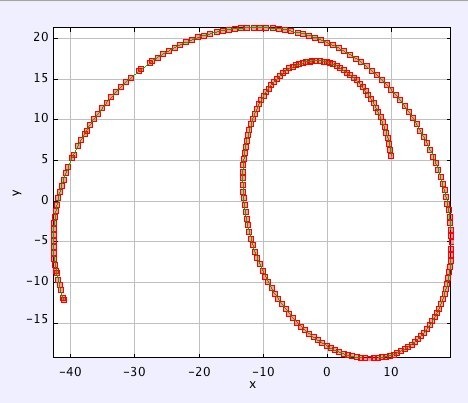Marc Abrahams's Blog, page 580
April 8, 2012
Fishy smells (psychological effects of)
 If you were playing a 'trust game', would a generally pervasive fishy smell lead you to trust your opponents less? It might well do, according to recent research from the University of Michigan. Spike (Wing Sing) Lee and professor explain how
If you were playing a 'trust game', would a generally pervasive fishy smell lead you to trust your opponents less? It might well do, according to recent research from the University of Michigan. Spike (Wing Sing) Lee and professor explain how
"Forty-five students (mean age = 20.1 years, 22 female) at the University of Michigan participated in a one-shot trust game. They were approached individually on campus and randomly assigned to three smell conditions in a between-participants experimental design: fish oil (n = 16), fart spray (n = 15), or water (n = 14)."
The results of their set of fishy-based experiments suggest that:
"When something smells fishy, something suspicious is going on. The present studies suggest that this is not merely fancy language, but reflects the use of metaphoric knowledge that has behavioral, cognitive, and perceptual consequences."
The paper:'Something Smells Fishy: On the Bidirectional Nature and Cognitive Mediation of Metaphoric Influence'(Journal of Personality and Social Psychology, forthcoming.) can be read in full here (scroll to page 6 in the pdf)
(Fishy'n'Chips photo courtesy Canadian Girl Scout, Wikipedia)

BeeGees Music, Applied to CPR
Music [specifically, the music you can hear in the video below] doeth save the heart, perhaps, when applied to an otherwise silent life-saving technique, suggests this study:
"'Stayin' Alive': A Novel Mental Metronome to Maintain Compression Rates in Simulated Cardiac Arrests," John W. Hafner, Jeremy L. Sturgell, David L. Matlock, Elizabeth G. Bockewitz, Lisa T. Barker,Journal of Emergency Medicine, epub March 22, 2012. The authors, at University of Illinois College of Medicine at Peoria, OSF Saint Francis Medical Center, Peoria, explain:
"Subjects were randomly paired and alternated administering CPR (cardiopulmonary resuscitation) compressions on a mannequin during a standardized cardiac arrest scenario. While performing compressions, subjects listened to a digital recording of the Bee Gees song "Stayin' Alive," and were asked to time compressions to the musical beat. After at least 5 weeks, the participants were retested without directly listening to the recorded music…. The mean compression rate during the primary assessment (with music) was 109.1, and during the secondary assessment (without music) the rate was 113.2….
"Conclusions: Medical providers trained to use a novel musical memory aid effectively maintained AHA guideline CPR compression rates initially and in long-term follow-up."

April 7, 2012
Medical pop-up book vids, with silent organs!
These are pop-up medical books, or rather videos of some of those books being flipped-through. Whitney Trettien, Rachel Ingold, and Meg Brown of Duke University created the videos. The videos, being silent, feature silent organs. (Thanks to Laughing Squid and @JenLucPiquant for bringing them to our attention.)

April 6, 2012
Sneaking behaviour in the dusky frillgoby Bathygobius fuscus
Want to know more about the sneaking behaviour in the dusky frillgoby Bathygobius fuscus? You are in luck:
"Large- and small-size advantages in sneaking behaviour in the dusky frillgoby Bathygobius fuscus," Takeshi Takegaki, Takashi Kaneko and Yukio Matsumoto, Naturwissenschaften, Volume 99, Number 4, 285-289.
"Sneaking tactic, a male alternative reproductive tactic involving sperm competition, is generally adopted by small individuals because of its inconspicuousness. However, large size has an advantage when competition occurs between sneakers for fertilization of eggs. Here, we suggest that both large- and small-size advantages of sneaker males are present within the same species. Large sneaker males of the dusky frillgoby Bathygobius fuscus showed a high success rate in intruding into spawning nests because of their advantage in competition among sneaker males in keeping a suitable position to sneak, whereas small sneakers had few chances to sneak. However, small sneaker males were able to stay in the nests longer than large sneaker males when they succeeded in sneak intrusion."
(Thanks to investigator Tom Gill for bringing this to our attention.)

Why Britain Boasts So Many Pregnant Men
A letter in BMJ suggests a reason why so many men in Britain seem to be pregnant:
"The Importance of Knowing Context of Hospital Episode Statistics When Reconfiguring the NHS," Lauren Brennan, Mando Watson, Robert Klaber and Tagore Charles [three of whom are pictured here], BMJ 2012;344:e2432. The authors, at Imperial College London, write:
"We were quite surprised to discover that many males seem to be attending outpatient obstetrics, gynaecology, and midwifery services. Amazingly, between 2009 and 2010, there were over 17 000 male inpatient admissions to obstetric services and over 8000 to gynaecology with nearly 20 000 midwife episodes. These statistics seem to reveal some interesting service developments, but, although we applaud innovation, we suspect that the numbers may, at least partly, reflect data errors."
This figure shows " Male inpatient admissions to obstetrics and gynaecology, as well as midwife episodes":
BONUS: Infectious diseases in bricks

A 1st physics analysis of Angry Bird Space
Rhett Allain looks into the physics of the game Angry Bird Space:
One of the things I love about analyzing games like Angry Birds Space is that you have some freedom to create little experiments, but you can't just do whatever you want. This is a lot like real-life science. Maybe I want to build a gravitational wave detector. Ideally, it would be the size of the Earth. However, building such a thing is just not so simple. We have to settle for something else. So, what is my "experiment"? One of the problems I had with the previous analysis was that the forces were always changing directions. How do you fix that? Make a bird move in just one dimension….
(Thanks to investigator Gregg Weil for bringing this to our attention.)

Wired: The greatest Ig Nobel Prize-winning studies
Wired magazine is likely going to spark some arguments with Jeremy Kingsley's article called "The five greatest Ig Nobel prize-winning scientific papers."

April 5, 2012
Headline of the week: Singing bug willie
This week's Headline of the Week comes from last year — June 30, 2011, to be specific. We neglected it, unfairly, at the time, though we did mention it later. Now we are mentioning it again. Behold:
'Singing penis' sets noise record for water insect
By Ella Davies
Reporter, BBC Nature
Scientists from France and Scotland recorded the aquatic animal "singing" at up to 99.2 decibels, the equivalent of listening to a loud orchestra play while sitting in the front row. The insect makes the sound by rubbing its penis against its abdomen in a process known as "stridulation". Researchers say the song is a courtship display performed to attract a mate. Micronecta scholtzi are freshwater insects measuring just 2mm that are common across Europe.
In a study published in the journal PLoS One, the scientists discovered that the small animals make a mighty sound….
The BBC Web site goes on to reproduce the sound, but not the penis. The study is: "So Small, So Loud: Extremely High Sound Pressure Level from a Pygmy Aquatic Insect (Corixidae, Micronectinae)," Jérôme Sueur, David Mackie, James F.C. Windmill, PLoS ONE 6(6), 2011, p. e21089.
(Thanks to investigator John Hoyland for bringing it to our attention.)

Introducing – The Golfball Index
Each month sees in a batch of new US patents for golfballs. Can their numbers serve as a pointer for estimating the ongoing condition of human ingenuity? An Improbable Investigation.
The Golfball Index moved back into positive territory in February 2012, with 9 new US golfball patents being granted. This represented a 350% increase over the very poor showing of Jan 2012, when there were only 2 golfball patents for the entire month. February's strongly upward trend fell back a little in March however, with just 7 new golfballs.
January 2012
• Golf balls incorporating rigid, rosin-modified polymers
• Golf ball comprising isocyanate-modified composition
February 2012
• Multilayer golf ball with a thin thermoset outer layer
• Golf ball having cross-core hardness differential and method for making it
March 2012
• Golf ball layer having reduced surface hardness and method of making same
• Golf ball with multiple cover layers
• Treatment for facilitating bonding between golf ball layers and resultant golf balls
• Golf ball surface patterns comprising multiple channels
Caution with regard to forward-looking statements :
Historical data should not be taken as an indicator of future performance. The Golfball Index may go down as well as up.
Next Month : the Golfball Index update for April

Dudley Herschbach on Ben Franklin and the Ig Nobels
Dale Singer of the St. Louis Beacon reports about Dudley Herschbach's talk:
What does Beano, the infamous anti-flatulence treatment, have in common with Dasani, the bottled water with the exotic-sounding name? Both have figured into the Ig Nobel Prizes, those pseudo-silly-scientific awards that, according to their website, are designed to honor achievements that first make people laugh, and then make them think. And some winners have also been recipients of their better-known and considerably more serious cousin, the Nobel Prizes for science.
A big fan of the Ig Nobels, Harvard emeritus professor Dudley Herschbach – one of the three winners of the 1986 Nobel Prize in chemistry for their "contributions concerning the dynamics of chemical elementary processes" – talked about them at Washington University's Graham Chapel Wednesday in an address titled "Silly Serious Science"….
To show that the Ig Nobels carry on a long tradition of mixing science with silliness, Herschbach concluded with a 1780 proposal from Benjamin Franklin, who showed he was far ahead of his time.
"It is universally well known," Herschbach quoted Franklin as postulating, "that in digesting our food, there is created in the bowels of human creatures a great quantity of wind. My prize question: To discover some drug wholesome and not disagreeable, to be mix'd with our common food, that shell render the natural discharges of wind from our bodies not only inoffensive, but agreeable as perfumes."

Marc Abrahams's Blog
- Marc Abrahams's profile
- 14 followers



























